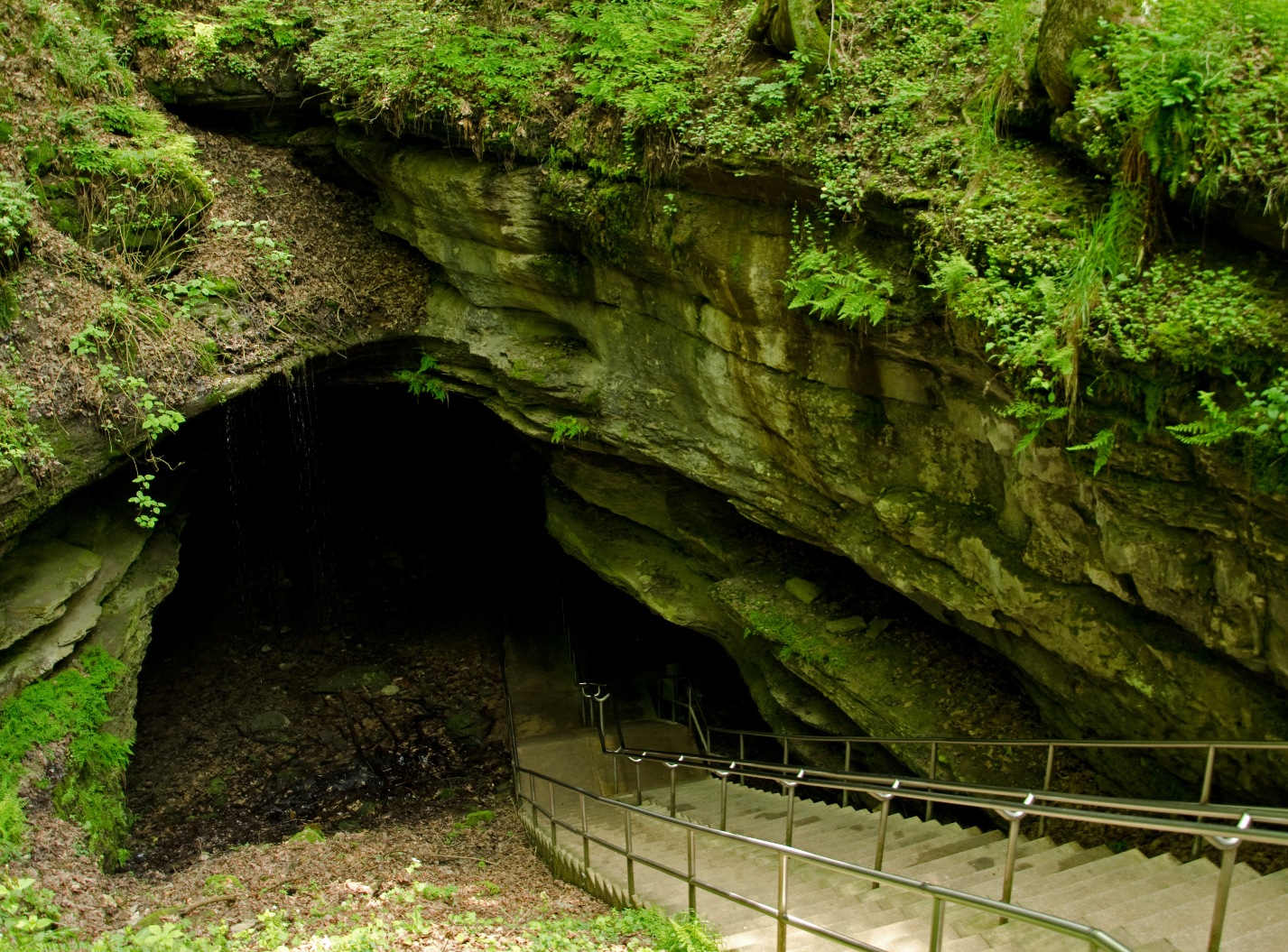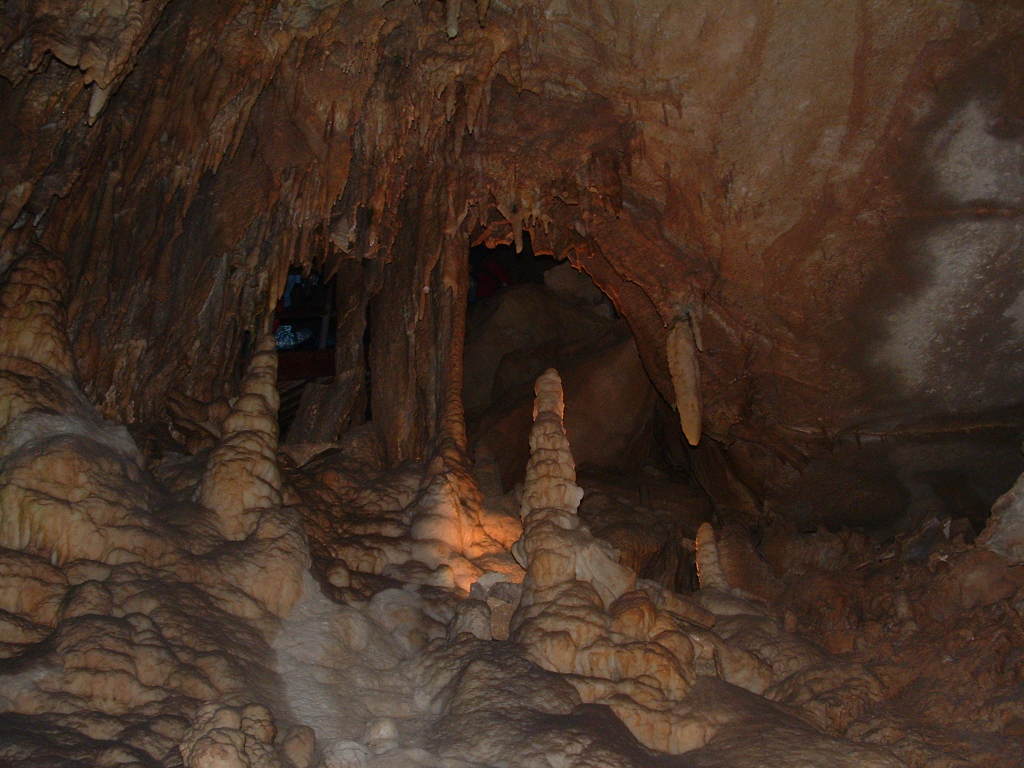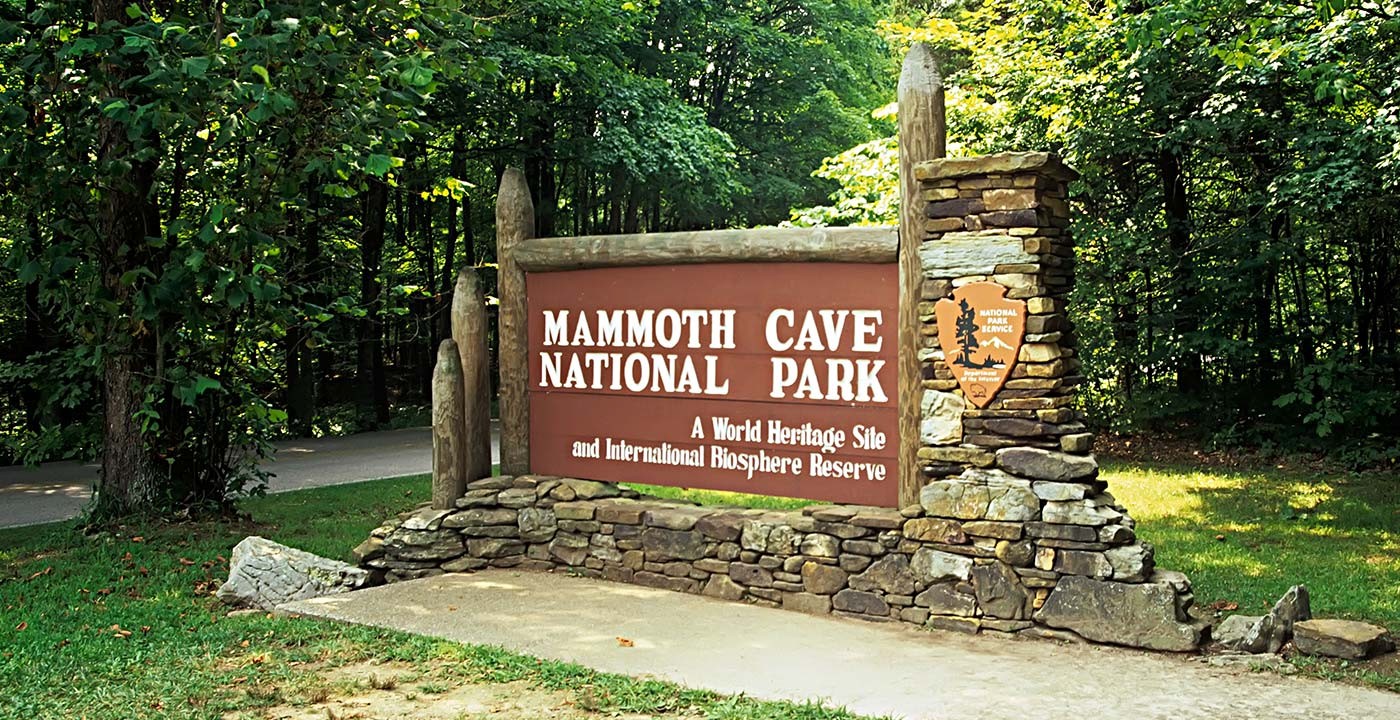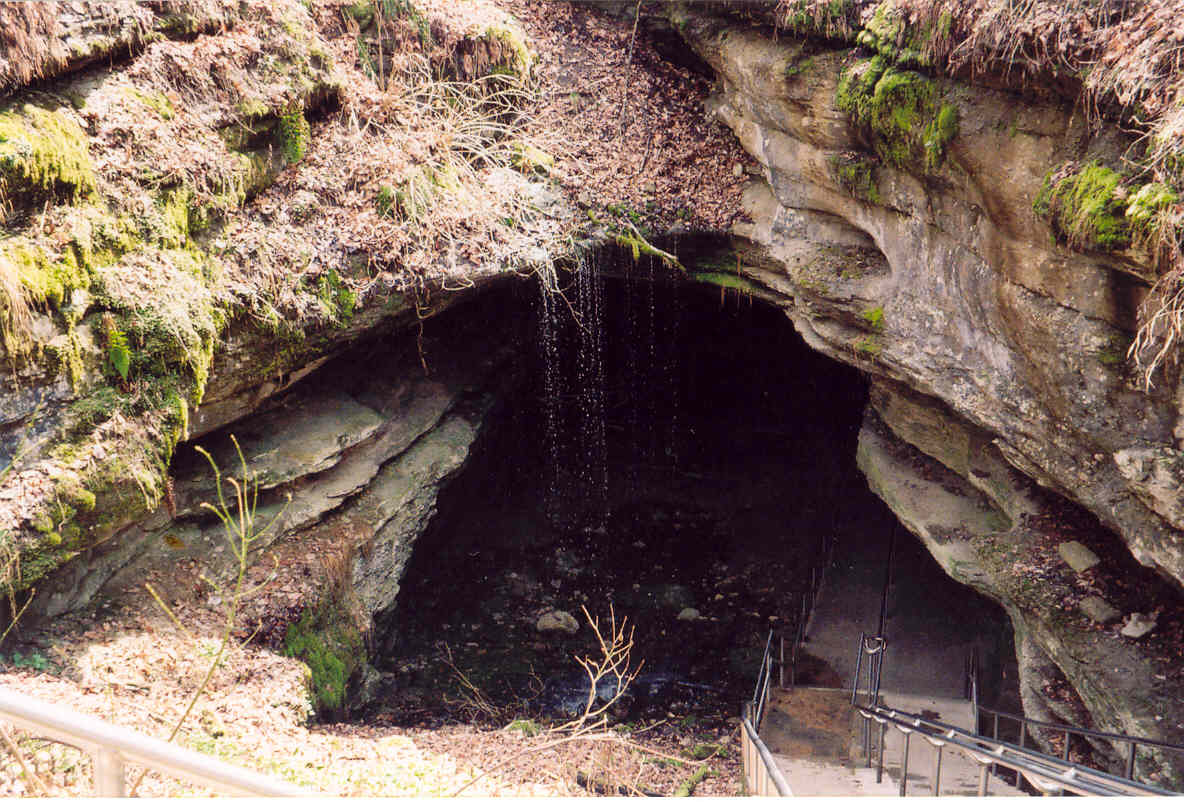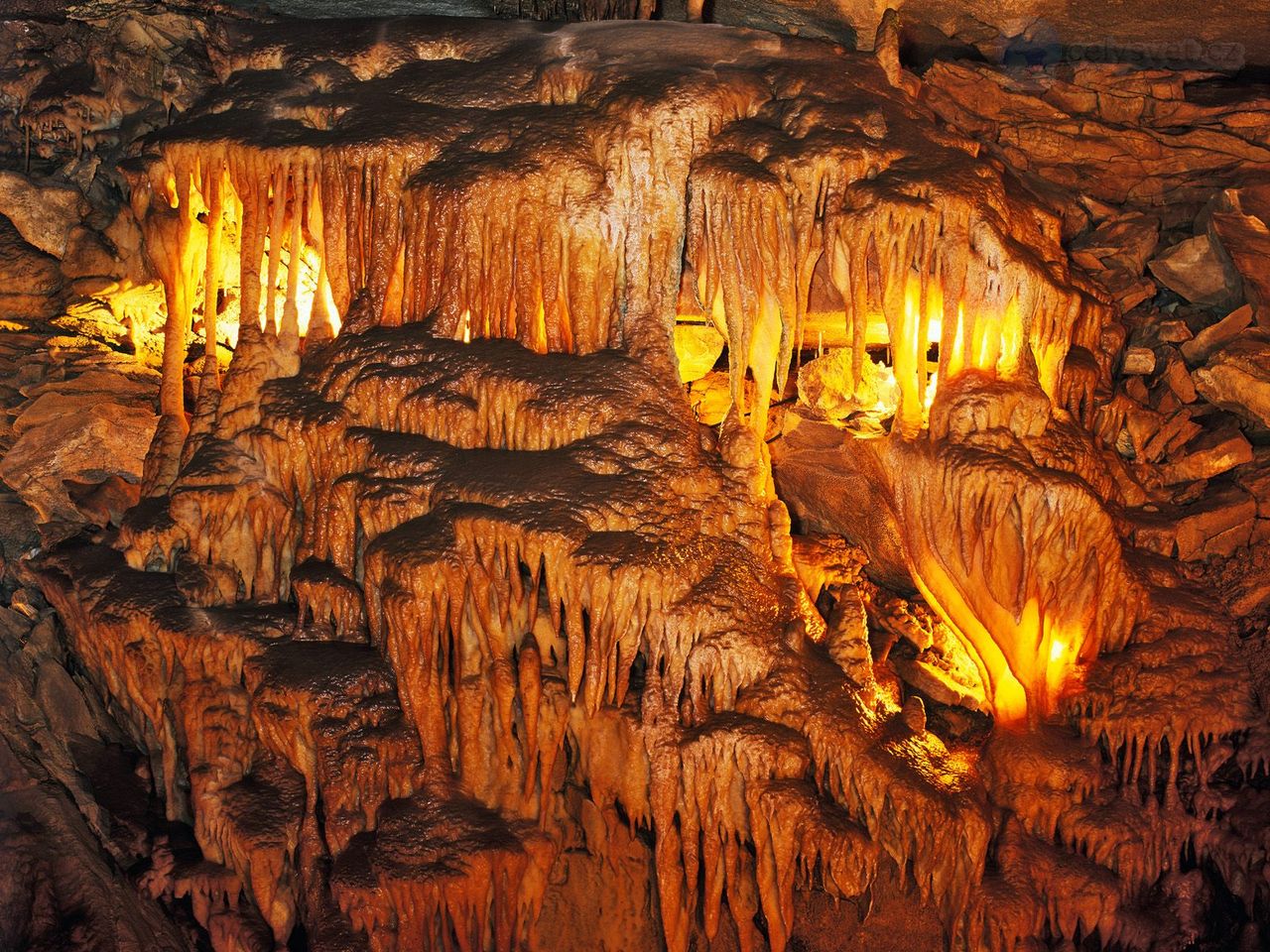Mammoth Cave National Park, located in the state of Kentucky, has the world's largest network of natural caves and underground passageways, which are characteristic examples of limestone formations.
The park includes by far the longest cave system in the world, with known passages extending some 550 km. It is of geological importance due to the 25 million years of cave-forming action by the Green River and its tributaries. Almost every type of cave formation is known within the site and the geological processes involved in cave formation are continuing. The long passages with huge chambers, vertical shafts, stalagmites and stalactites, gypsum 'flowers' and 'needles' and other natural features of the cave system are all superlative examples of their types. The park and its underground network of more than 550 km surveyed passageways are home to varied flora and fauna (including a number of endangered species).
It is the most extensive and diverse cave ecosystem in the world, with over 200 species, mostly invertebrate, indigenous to the network of caves, with 42 species adapted to life in total darkness. Outside the cave, the karst topography is superb, with fascinating landscapes, luxuriant vegetation and abundant wildlife - terrestrial vertebrates include 43 mammal, 207 bird, 37 reptile and 27 amphibian species. All the features of a karst drainage system are found within the site. Fossils are distributed throughout the rocks of the Mississippian age and include brachiopods, crinoids and corals.
Surface features are also important and Big Woods, a temperate deciduous oak-hickory dominated forest, is reputed to be one of the largest and best remaining examples of the ancient forest of eastern North America that once covered Kentucky. The vegetation communities on the surface of the plateau include 84 tree varieties, 28 varieties of shrubs and vines, 29 types of fern, 209 wildflowers, 67 species of algae, 27 species of fungi and 7 species of bryophyte. This temperate deciduous oak-hickory forest is dominated by oaks including white, black and chestnut oaks and hickories including pignut and mockernut, with some beech, maples, tulip tree, ash and eastern red cedar




